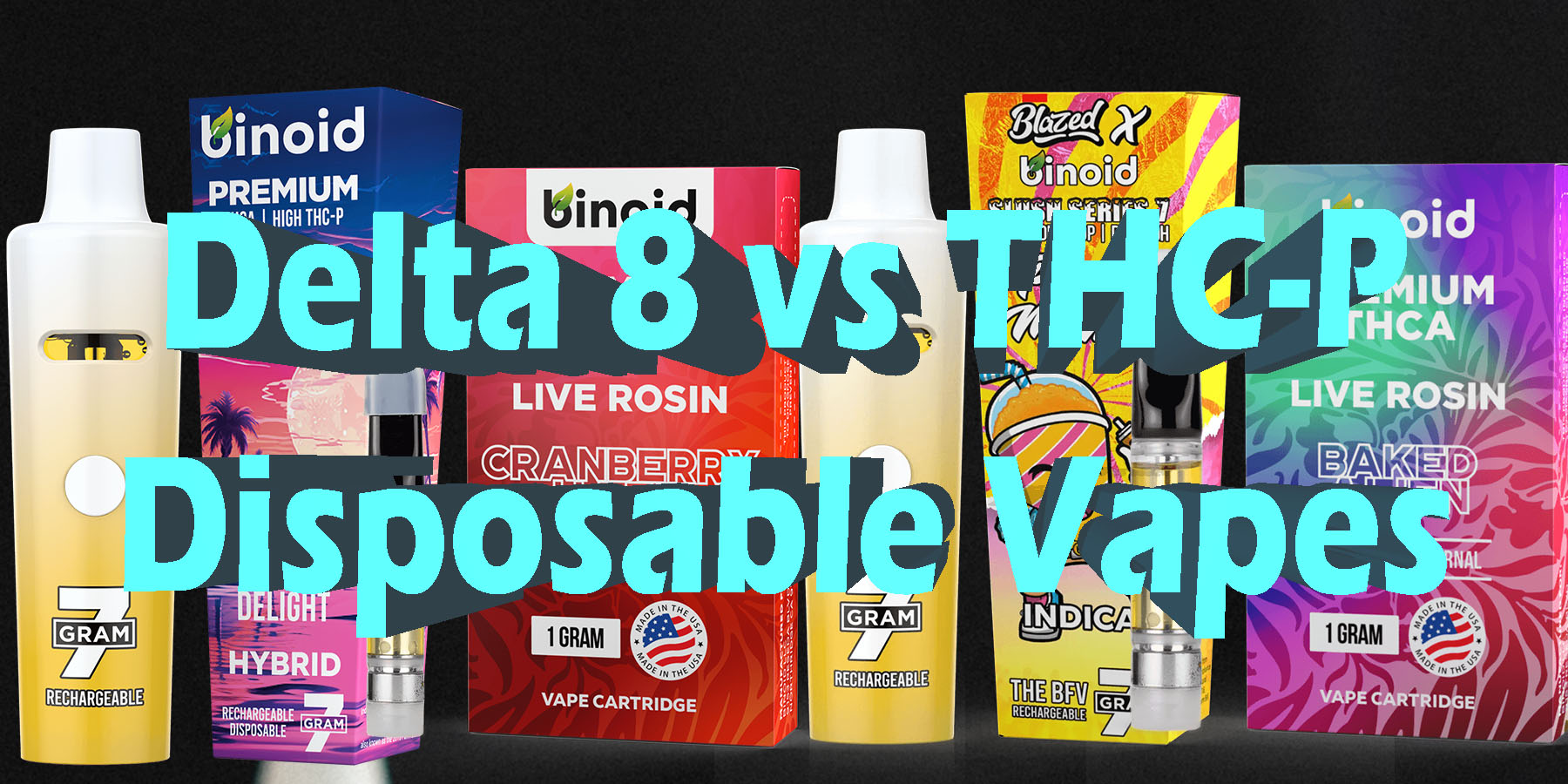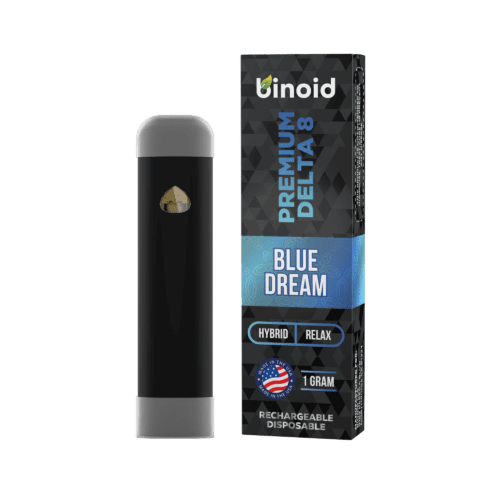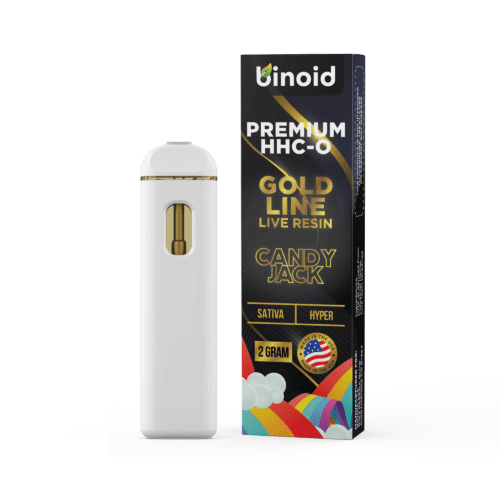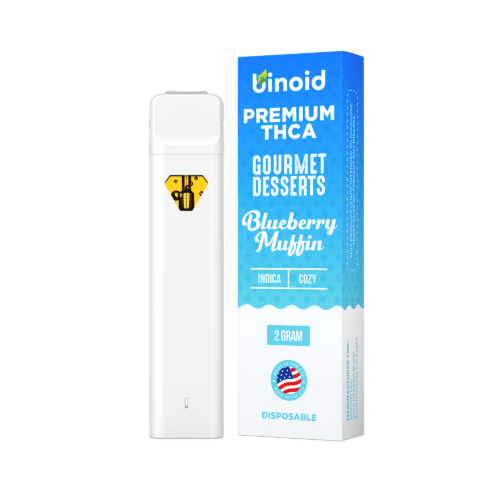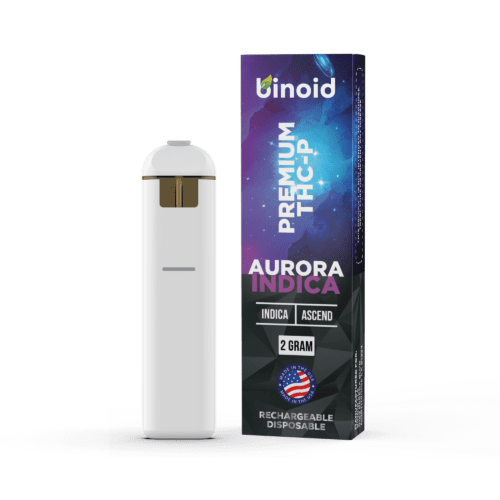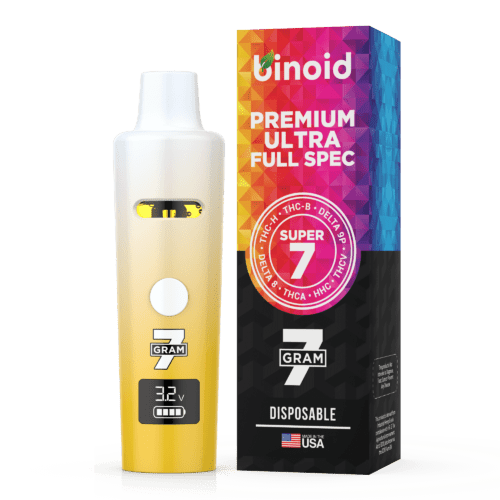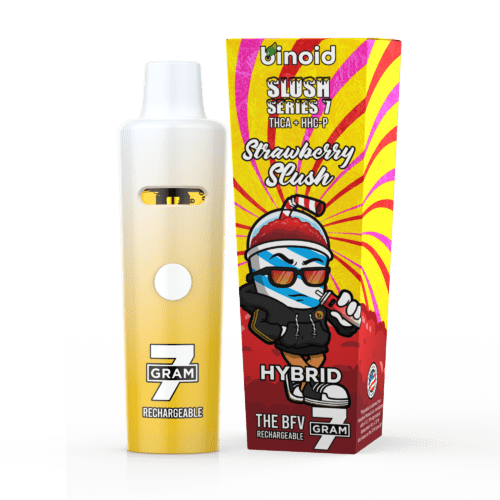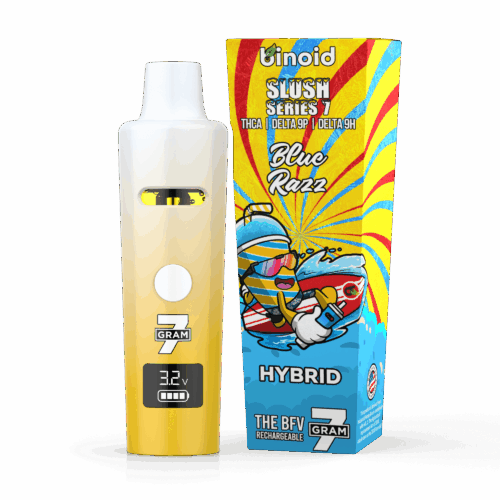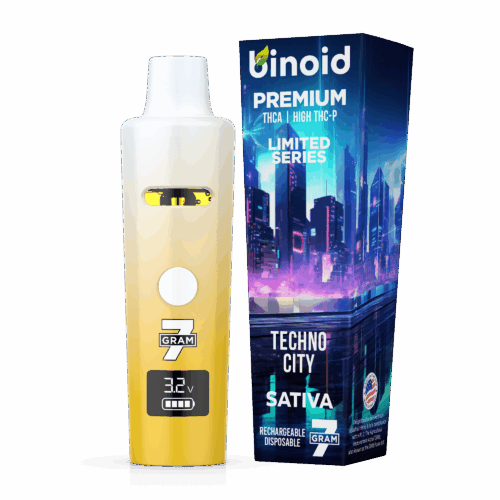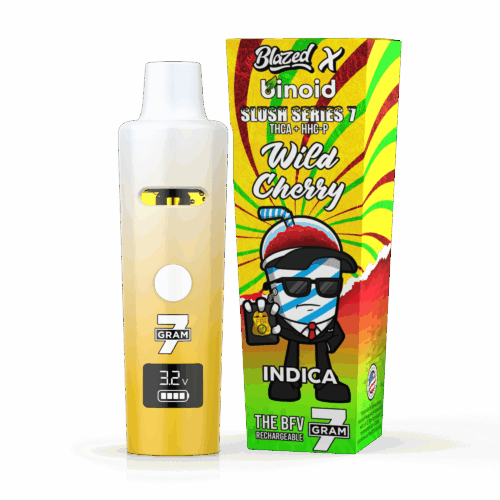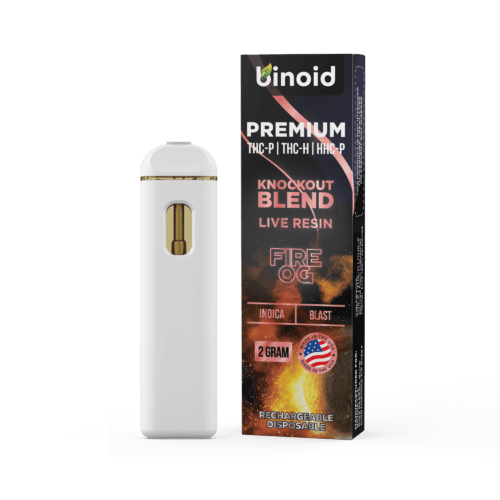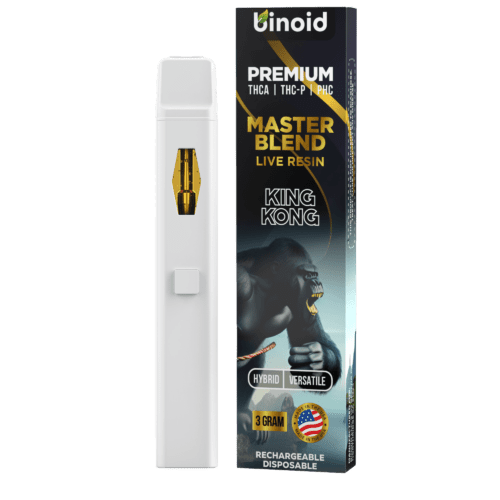The ever-expanding universe of hemp-derived cannabinoids presents a dazzling, and sometimes dizzying, array of options for the modern consumer. Gone are the days of limited choices; today’s market is a vibrant frontier of innovation, constantly unveiling new compounds that offer unique experiences. Within this dynamic landscape, the convenience and simplicity of disposable vapes have made them a go-to choice for many enthusiasts. As this technology has evolved, so too have the potent and intriguing distillates they contain.
This brings us to a fascinating crossroads and a compelling matchup between two distinct and popular cannabinoids: Delta 8 and THC-P. The decision is not merely about choosing a product, but about curating a specific kind of experience, navigating a spectrum that ranges from gentle relaxation to profound euphoria. This comparison of Delta 8 disposable vapes versus THC-P disposable vapes is an exploration of two powerful contenders, each with its own unique character, set of effects, and place within the cannabinoid pantheon.
To Buy Cannabinoid Disposable Vapes Click Here
Recommended products
What are Cannabinoids?
At their core, cannabinoids are naturally occurring chemical compounds found predominantly in the cannabis sativa plant, which includes both hemp and marijuana varieties. These remarkable molecules are the primary drivers behind the plant’s vast array of effects, interacting in complex ways with the body’s internal systems. The cannabis plant is a veritable chemical factory, capable of producing over one hundred different cannabinoids, each with a unique molecular structure and, consequently, a distinct profile of effects. The most famous of these is undoubtedly Delta 9 THC, the compound primarily responsible for the traditional intoxicating effects associated with marijuana. However, the world of cannabinoids is far more diverse, encompassing non-intoxicating compounds like Cannabidiol (CBD) and Cannabigerol (CBG), as well as a host of other fascinating minor cannabinoids that are now entering the spotlight.
The historical journey to understanding these compounds is a story of scientific dedication. For millennia, humanity utilized the cannabis plant without understanding its mechanisms, but the 20th Century brought these secrets to light. The groundbreaking work of Israeli chemist Dr. Raphael Mechoulam and his team in the 1960s led to the isolation and synthesis of Delta 9 THC, finally identifying the specific molecule behind the plant’s psychoactive properties.
This discovery was the key that unlocked the door to a new field of study, prompting further research that would eventually uncover the body’s own internal cannabinoid system. This system, a vast and intricate network of cellular communication, was named the endocannabinoid system (ECS) in honor of the plant that led to its discovery. The ECS, composed of receptors, enzymes, and internally produced cannabinoids (endocannabinoids) like anandamide (often called the “bliss molecule”) and 2-arachidonoylglycerol (2-AG), acts as a master regulator, helping to maintain a state of internal balance, or homeostasis, across nearly all of our physiological systems.
Phytocannabinoids, the cannabinoids derived from plants like cannabis, have the remarkable ability to interact with our native ECS because their molecular shapes are strikingly similar to our own endocannabinoids. They can bind to or influence the two primary receptor types: CB1 receptors, which are densely concentrated in the brain and central nervous system, and CB2 receptors, which are found predominantly throughout the peripheral nervous system and on cells of the immune system.
The manner and intensity with which a cannabinoid binds to these receptors dictates its effects. For example, the powerful psychoactivity of THC compounds stems from their strong affinity for the CB1 receptor. It is this intricate dance between plant-derived molecules and our own internal biology that unlocks the potential for the profound experiences of euphoria, relaxation, and heightened sensory perception that cannabinoids can offer. This interaction is not just a simple on/off switch; it’s a complex modulation that can be influenced by the presence of other compounds.
This leads to the fascinating concept known as the “entourage effect,” a theory which posits that cannabinoids work in synergy with other plant compounds, like terpenes (aromatic molecules responsible for scent and flavor) and flavonoids, to produce a more robust and nuanced outcome than any single compound could achieve alone. A full-spectrum extract containing a wide array of these molecules is believed to offer a more holistic and effective experience.
The distinction between different cannabinoids themselves lies in the subtle yet significant variations in their chemical architecture. For instance, the difference between the intensely psychoactive Delta 9 THC and the milder Delta 8 THC is simply the location of a single double bond in their carbon chain structure. This small shift dramatically alters how strongly the molecule can bind to the CB1 receptor. Similarly, THC-P (Tetrahydrocannabiphorol) stands apart due to its longer alkyl side chain, which allows it to bind to the CB1 receptor with even greater affinity than Delta 9 THC. Understanding these molecular distinctions is key to comprehending why Delta 8 provides a gentle, clear-headed lift, while THC-P can deliver an experience of unparalleled potency and depth.
What are Cannabinoid-Infused Disposable Vapes and How are They Typically Created?
Cannabinoid-infused disposable vapes represent a pinnacle of convenience and modern engineering within the hemp and cannabis markets. At their most basic, they are single-use, all-in-one devices designed for the inhalation of cannabinoid-rich vapor. Unlike more complex reusable vape setups that require separate batteries, tanks, and coils, a disposable vape comes fully assembled, pre-charged, and pre-filled with a specific amount of cannabinoid distillate.
The core components of these devices are a small internal battery, a heating element known as an atomizer or coil, and a reservoir or tank that holds the vape oil. This oil is a carefully crafted formulation consisting of a purified cannabinoid extract—such as Delta 8, THC-P, or a blend of several others—and, in most cases, a profile of terpenes to provide flavor, aroma, and contribute to the overall entourage effect.
The user simply inhales from the mouthpiece, which in most models activates the battery, heats the coil, and instantaneously vaporizes the oil, delivering a smooth, inhalable mist directly to the lungs for rapid absorption into the bloodstream. This streamlined, user-friendly design eliminates the need for any maintenance, refilling, or technical knowledge, making it an incredibly accessible entry point for newcomers and a hassle-free option for seasoned connoisseurs.
The market for disposable vapes is characterized by a remarkable diversity in design, functionality, and materials, catering to a wide range of consumer preferences and technological advancements. This variety ensures that users can find a device that not only delivers their desired cannabinoid experience but also suits their aesthetic and practical needs. The different types and kinds of disposable vapes can be broadly categorized by several key features:
Shapes & Sizes: The form factor of disposable vapes has evolved significantly from the early “cig-a-like” models. Today, the most common shape is the sleek and discreet pen-style vape, prized for its portability and resemblance to a writing instrument. However, manufacturers are increasingly experimenting with other designs, such as compact and palm-friendly box or pod-style devices, which often house larger batteries and bigger oil reservoirs. Some brands even offer unique, ergonomically shaped disposables designed for maximum comfort and a more substantial feel in the hand. The choice of shape and size often balances portability with longevity and performance.
Construction Types: The materials used in a disposable vape’s chassis play a crucial role in its durability, feel, and overall quality. Many entry-level models are constructed from durable hard plastics like polycarbonate, which are lightweight and cost-effective. More premium devices often feature a more robust construction, utilizing materials like zinc-alloy, aluminum, or stainless steel for the main body. These metal casings not only provide a superior, weightier feel and enhanced durability but can also offer better heat dissipation. Some vapes incorporate soft-touch finishes or textured grips for improved ergonomics and a more luxurious tactile experience.
Rechargeable Models: A significant innovation in the “disposable” category is the introduction of rechargeable models. While the device is still intended to be disposed of once the oil is depleted, these disposables feature an integrated USB port (typically Micro-USB or, more recently, USB-C). This allows the user to recharge the battery if it dies before the oil is fully consumed. This is particularly important for larger capacity disposables (containing 2 grams of oil or more), as it ensures that no product is wasted due to a depleted battery, guaranteeing the user can enjoy every last drop of the cannabinoid distillate.
Draw-Activation and/or Button-Activation: The activation mechanism is a key aspect of the user experience. The vast majority of disposable vapes are draw-activated (or “auto-draw”), meaning they have no buttons and are activated simply by inhaling from the mouthpiece. This is the ultimate in simplicity and mimics the intuitive action of smoking. In contrast, some models are button-activated, requiring the user to press and hold a button while inhaling. While slightly less intuitive, button activation offers more control, prevents accidental activation, and is often a prerequisite for more advanced features like pre-heating or variable voltage settings.
Some that Come with Advanced Features & Functionalities: To stand out in a crowded market, some brands are incorporating sophisticated features typically found in more advanced, non-disposable vaporizers. A common feature is a pre-heat function, activated by a series of button clicks, which gently warms the oil to an optimal viscosity for a smoother, fuller first draw, especially in colder temperatures. Another advanced option is variable voltage or power settings, allowing the user to cycle through different temperature levels. A lower temperature might preserve more of the delicate terpene flavors, while a higher temperature can produce larger, more robust vapor clouds. Some of the most advanced disposables even include small digital screens that display information like the remaining battery life or the current power setting.
The creation of a cannabinoid-infused disposable vape is a meticulous, multi-stage process that combines precision engineering, sophisticated botanical extraction, and careful formulation science. It can be broken down into three primary phases: manufacturing the physical device, creating the cannabinoid-infused vape oil, and finally, the assembly and packaging of the finished product. Each step requires strict quality control to ensure the final product is safe, reliable, and effective.
Recommended products
Part 1: The Production of the Disposable Vape Device
The physical vape device itself is a miniature marvel of technology, and its production is a complex process of global sourcing and precision assembly that requires expertise in electronics, materials science, and industrial design. It begins with the intensive design and engineering phase, where teams determine the form factor, battery capacity, atomizer resistance, and airflow characteristics needed to vaporize a specific viscosity of oil effectively. Once the design is finalized and prototyped, the large-scale manufacturing process kicks into gear. The outer housing, or chassis, is produced using techniques chosen for their scalability and material properties.
For many common disposable vapes, this involves high-pressure injection molding, where molten thermoplastic polymers like Polycarbonate (known for its high impact strength) or PCTG (a copolyester prized for its chemical resistance to terpenes) are forced into custom steel molds. For more premium metal devices, processes like die-casting for zinc-alloys or high-precision CNC (Computer Numerical Control) machining of solid blocks of aluminum or stainless steel are employed. These metal processes create a more durable, weighty, and premium-feeling product, which can then be further treated with finishes like anodizing for color and durability or PVD coating for a resilient, high-end metallic sheen.
Simultaneously, the electronic heart of the device is sourced from specialized manufacturers and assembled. The battery is almost always a lithium-ion polymer (LiPo) cell, chosen for its high energy density and flexible form factor. The capacity, measured in milliamp-hours (mAh), is carefully calculated to either outlast the oil supply or, more commonly, to provide several use cycles before needing a recharge. These batteries are equipped with a small but crucial protection circuit module (PCM) that provides safety features like overcharge, over-discharge, and short-circuit protection, often meeting international safety certifications like CE or UL.
The microcontroller unit (MCU), or chipset, is the device’s brain. In simple draw-activated pens, it contains a tiny acoustic or capacitive sensor that detects the change in air pressure during an inhale to activate the battery. In more advanced models, this chip is far more complex, managing button inputs, controlling multi-click functions (e.g., 5 clicks to turn on/off, 2 clicks for pre-heat), regulating voltage output through a buck-boost converter to provide consistent power as the battery drains, and driving any LED indicator lights or OLED screens.
The atomizer is the component responsible for the magic of generating vapor, and its design is critical. Its core is a resistance wire, commonly made from Kanthal (an iron-chromium-aluminum alloy) due to its stability across temperature ranges. This wire is wrapped into a coil with a specific resistance (e.g., 1.2 ohms, 1.4 ohms), which, according to Ohm’s Law, determines how much current it draws and thus how hot it gets. This coil is then threaded with a wicking material.
While organic cotton is common, higher-quality disposables are increasingly using porous ceramic wicks. Ceramic can withstand very high temperatures without combusting, which prevents the burning taste associated with a “dry hit” and is believed to provide a purer, cleaner flavor profile by not imparting any of its own taste. These assembled components—chassis, certified battery, advanced chipset, and ceramic atomizer—are then brought together on a sterile assembly line, wired with high-precision robotic soldering, and individually tested for electronic functionality before being cleared for the filling stage.
Part 2: The Creation of the Cannabinoid-Infused Vape Oil
This part of the process is a sophisticated blend of agriculture and chemistry, transforming raw plant material into a potent, purified oil. It starts with sourcing high-quality hemp, where factors like terroir—the specific soil, climate, and geography of the growing region—can influence the final terpene expression. Many premium brands now source from farms that use regenerative or organic farming practices to ensure the starting biomass is free from pesticides and heavy metals. Once harvested, the hemp is dried and cured, then subjected to an extraction process. Supercritical CO2 extraction remains a gold standard; it uses carbon dioxide in a fluid state that has properties of both a liquid and a gas, allowing it to effuse through the plant material like a gas but dissolve cannabinoids like a liquid solvent.
By precisely controlling temperature and pressure, extractors can even target specific compounds, with subcritical (lower temp/pressure) CO2 runs being used to strip delicate terpenes before a supercritical run extracts the cannabinoids. Another common method is cryogenic ethanol extraction, where the biomass is soaked in ice-cold ethanol. The frigid temperature helps to prevent the ethanol from pulling undesirable compounds like chlorophyll and waxes, leading to a cleaner initial extract that requires less post-processing.
The resulting crude oil, while rich in cannabinoids, is unrefined. The first purification step is winterization, where the crude is mixed with ethanol and frozen for 24-48 hours. This causes fats, waxes, and lipids to congeal and precipitate, allowing them to be removed via filtration. Following this, the oil is decarboxylated (heated) to convert non-psychoactive acidic cannabinoids like CBDA into their active, neutral forms like CBD. The next crucial step is converting the purified CBD into the target cannabinoid. For Delta 8, this is a well-understood acid-catalyzed isomerization reaction.
The CBD distillate is dissolved in a nonpolar solvent (like heptane), a specific acid catalyst is introduced, and the mixture is heated under reflux in a vacuum, causing the CBD molecules’ atomic structure to rearrange into the more stable Delta 8 THC isomer. Creating a rare cannabinoid like THC-P requires a more advanced multi-step synthetic pathway, often starting from other botanical precursors and requiring a higher degree of organic chemistry expertise.
After the chemical reaction, the mixture must be neutralized and thoroughly cleansed of all solvents, catalysts, and reaction byproducts. This is where multi-stage distillation becomes critical. Using high-tech apparatus like a wiped-film or short-path distillation unit, the mixture is heated under a deep vacuum. This vacuum dramatically lowers the boiling points of the cannabinoids, allowing them to be vaporized and separated without the high temperatures that would cause them to degrade.
The differing boiling points of CBD, Delta 8, Delta 9, and other minor cannabinoids allow for their fractional separation and purification, resulting in a final distillate of exceptional purity, often exceeding 95% potency. The final step is formulation. This clear, incredibly thick distillate is gently heated to reduce its viscosity and then infused with a precisely measured blend of terpenes. The choice between authentic, full-spectrum cannabis-derived terpenes (CDTs) and more stable, replicable botanical-derived terpenes (BDTs) is a key decision that defines the final product’s quality and flavor profile.
Part 3: Bringing It All Together
The final stage is a marriage of hardware and oil, a process that demands the precision of a laboratory and the efficiency of modern manufacturing. This entire process takes place in a highly controlled cleanroom environment, which must adhere to strict air purity standards, such as ISO 7 or ISO 8, to prevent any contamination from dust, microbes, or other airborne particles. The purified and meticulously formulated cannabinoid oil is loaded into automated filling machines. These are not simple injectors; they are often sophisticated piston fillers or peristaltic pumps calibrated to dispense the exact volume (e.g., 2.0mL) with a tolerance of just a few microliters, ensuring product consistency. The empty, electronically tested disposable vape devices move along a conveyor to the filling station, where a stainless-steel nozzle injects the oil directly into the device’s reservoir.
Immediately after filling, the device is capped and sealed. This usually involves press-fitting a mouthpiece that contains multiple silicone gaskets to create a hermetic seal. This step is critical not only to prevent the oil from leaking but also to protect it from long-term exposure to oxygen, which can cause oxidation that degrades the cannabinoids (turning them into other compounds like CBN) and ruins the terpene flavors. Once sealed, the device undergoes another battery of quality control checks. A statistical sample from the batch is put through automated puff machines to test for consistent vapor production and airflow.
Leak testing is often performed by placing devices in a vacuum chamber to see if any oil is forced out. The most crucial part of this final QC is the batch testing. A sample of the actual filled devices is sent back to an independent, ISO 17025-accredited laboratory. This final test verifies the potency and purity of the oil inside the finished product, providing the data for the consumer-facing COA and confirming that no contaminants like heavy metals have leached from the device’s components into the oil.
After passing all tests, the disposables are ready for packaging. They are often individually sealed to preserve freshness. The final consumer packaging must comply with all state regulations, which may include child-resistant mechanisms, specific warning labels, and a clear display of the batch or lot number. This batch number is the key to transparency, as it corresponds to the specific COA for that exact production run, which responsible companies make accessible via a QR code. This system ensures full traceability, allowing a consumer to see the entire history and safety profile of their specific device. The packaged disposables are then cased, inventoried, and shipped to distribution centers, ready to make their way to retail shelves.
Recommended products
Breaking Down Today’s Cannabinoid Disposable Vapes Matchup: Delta 8 Disposables vs. THC-P Disposables
With a foundational understanding of cannabinoids and the intricate process of creating disposable vapes, we can now turn our attention to the main event: the head-to-head comparison of Delta 8 and THC-P disposables. This is more than just a simple comparison; it is a tale of two vastly different experiences, each originating from the same humble hemp plant but branching off to occupy opposite ends of the potency spectrum.
On one side, we have Delta 8, the reliable and approachable cannabinoid known for its gentle, calming effects. On the other side stands THC-P, a powerhouse molecule renowned for its formidable strength and profound psychoactivity. Choosing between them requires a careful consideration of one’s own tolerance, desired intensity, and the specific context or setting for the experience. Let’s delve into the specifics of each contender to uncover their unique characteristics, strengths, and potential drawbacks.
Contender #1: Delta 8 Disposables
Delta 8 disposables have firmly established themselves as a cornerstone of the modern hemp market, serving as a popular entry point for those curious about psychoactive cannabinoids and a reliable go-to for experienced users seeking a more manageable and functional experience. These devices encapsulate the essence of Delta 8 THC—a cannabinoid celebrated for its ability to provide a sense of blissful relaxation and clear-headed euphoria without the overwhelming intensity that can sometimes accompany its more famous cousin, Delta 9 THC.
The profound appeal of a Delta 8 disposable lies in its inherent simplicity and comforting predictability; it offers a consistent and controlled way to unwind from the pressures of the day, elevate one’s mood into a state of gentle contentment, or simply view the world through a slightly more colorful and serene lens. For a vast number of consumers, it represents the perfect middle ground, a harmonious and accessible balance between genuinely noticeable, mood-altering effects and a well-maintained sense of lucidity and control that allows for continued engagement with the world.
At its chemical core, Delta 8, or Delta−8−Tetrahydrocannabinol, is an isomer of the more well-known Delta 9 THC, which means they share the exact same chemical formula but their atoms are arranged in a slightly different configuration. The critical distinction, which is responsible for the entirety of its unique effects, lies in the placement of a specific double bond within their carbon chain structure; this bond is shifted from the ninth carbon position in the case of Delta 9 to the eighth position in Delta 8.
This might seem like an insignificant structural change, but in neurochemistry, such subtle shifts can have profound consequences. This altered molecular shape causes Delta 8 to bind to the CB1 receptors in the brain with a noticeably lower affinity and efficacy compared to Delta 9. Think of it as a key that fits the lock but doesn’t turn it quite as forcefully, resulting in a psychoactive effect that is significantly milder, less anxiogenic, and often described by users as being more body-centric and less cerebrally jarring.
Interestingly, Delta 8 is also a natural degradation product of Delta 9 THC; over time, with exposure to oxygen and light, Delta 9 slowly oxidizes and rearranges into the more stable Delta 8 isomer. Although Delta 8 does occur naturally in the cannabis plant through this process, it is only present in minuscule trace quantities. This makes direct extraction commercially unfeasible, which is why the vast majority of Delta 8 found on the market today is created through a safe and well-understood laboratory process called isomerization, where abundant, hemp-derived CBD is chemically converted into Delta 8 in a controlled, purified setting.
The commercial market for Delta 8 disposable vapes is an incredibly diverse and vibrant ecosystem, offering a truly vast selection of devices, formulations, and flavor profiles designed to cater to every conceivable consumer preference and lifestyle. This incredible variety allows users to meticulously fine-tune not just the cannabinoid experience itself but also the physical interaction with the device, the ergonomics of its design, and the complex sensory aspects of flavor and aroma that so deeply influence the overall session. The different kinds and types of Delta 8 disposables available can be distinguished by a number of key characteristics that consumers can choose from:
Shapes & Sizes: Portability is often key for Delta 8 users who enjoy its functional effects throughout the day. This has led to the overwhelming popularity of slim, pen-style vapes that can be easily slipped into a pocket or purse. However, for home use or for those who want a longer-lasting device, larger disposables are available, often in ergonomic “box mod” or “pod” shapes that might contain 2, 3, or even 5 grams of Delta 8 oil, almost always paired with a rechargeable battery.
How They’re Constructed: The build quality of Delta 8 disposables ranges from basic and functional to premium and stylish. Everyday models often use lightweight, colored polycarbonate shells. Higher-end options may feature sleek, brushed aluminum or hefty, durable zinc-alloy bodies, sometimes with premium finishes like soft-touch rubber or faux leather accents, providing a more satisfying tactile experience during use.
Rechargeable or Non-Rechargeable: While the original disposable vapes were designed for single use until the battery died, the trend has overwhelmingly shifted towards rechargeable models, especially for any device containing more than 1 gram of oil. The inclusion of a USB-C or Micro-USB port is now standard for larger capacity Delta 8 disposables, ensuring the battery life never becomes a limiting factor in finishing the product.
Draw-Activated and/or Button-Activated: Simplicity is a major selling point for Delta 8, making draw-activated mechanisms the most common choice. The user simply inhales, and the device works instantly. However, some brands offer button-activated Delta 8 disposables to provide users with an “off” switch for added safety against accidental activation and to enable more complex features.
Possible Advanced Features & Functionalities: To differentiate their products, some manufacturers incorporate advanced features into their Delta 8 disposables. This can include a pre-heat function, which is useful for preventing clogs by warming the thick distillate, or variable voltage settings that allow users to choose between a flavor-focused, low-temperature hit and a cloud-focused, high-temperature hit.
Potential Use of Live Resin or Live Rosin: For a more authentic and full-bodied cannabis experience, many premium Delta 8 disposables utilize live resin or live rosin. Unlike standard distillate, which has terpenes added back in, live resin is extracted from flash-frozen cannabis plants, preserving the full spectrum of terpenes and other volatile compounds. This results in a richer, more complex flavor and aroma profile and is believed to contribute to a more nuanced entourage effect. Live rosin is a solventless version, offering a similarly premium experience.
Strain-Infused: The vast majority of Delta 8 disposables are strain-infused. This means they are formulated with terpene profiles that mimic famous cannabis strains. This allows users to choose their experience: an uplifting and energetic Sativa (like Sour Diesel), a relaxing and calming Indica (like Granddaddy Purple), or a balanced Hybrid (like Blue Dream), tailoring the effects of the Delta 8 to their specific mood or activity.
Occasionally Combined with Certain Mushrooms: A newer and more niche trend in the market involves the infusion of non-psychoactive mushroom extracts, such as Lion’s Mane or Cordyceps, into cannabinoid blends. While this is still an emerging area, the idea is to combine the effects of Delta 8 with the unique properties of these fungi, aiming for a more holistic or targeted experience. This is a novel approach that blends the worlds of cannabinoids and adaptogens.
Sometimes Combined with Other Cannabinoids: Delta 8 is an excellent team player and is frequently blended with other cannabinoids to create unique and synergistic effects. These blends can be categorized by the potency of the added cannabinoids:
Non-Intoxicating: Blending Delta 8 with CBD, CBN, or CBG can help to smooth out the experience, adding a layer of calm or focus without increasing the psychoactive intensity. A Delta 8 + CBN blend, for example, is often marketed for evening relaxation.
Mild Potency: Combining Delta 8 with other mild cannabinoids like Delta 10, THCV, or THCM can create a more complex and nuanced psychoactive effect than Delta 8 alone, often described as more energetic or creative.
Moderate Potency: To give Delta 8 a slight boost, it is sometimes mixed with moderately potent cannabinoids like THCA or Delta 11. This can elevate the overall experience without pushing it into the high-potency category.
Strong Potency: For users who enjoy the character of Delta 8 but desire a significant increase in intensity, manufacturers create blends that add a small but powerful amount of a strong cannabinoid like THC-P, THC-JD, HHC, or THC-B. This results in a potent product where the foundational feeling is still Delta 8, but the ceiling of the experience is much higher.
The overall effects of a Delta 8 disposable vape are typically characterized by a sense of calm, physical relaxation, and a gentle cerebral uplift. Users often report feeling more “chilled out”, happy, and content, with a noticeable but not overwhelming shift in perception. It’s often described as a “functional” high, allowing many to remain clear-headed and engaged in activities like creative work, socializing, or light physical activity. When experienced on its own in a standard distillate vape, the effect is straightforward and predictable.
However, when combined with the other factors, the experience becomes much more textured. A strain-infused Sativa Delta 8 disposable can feel energizing and giggly, perfect for an afternoon with friends. In contrast, an Indica blend can produce a profoundly relaxing “in-da-couch” sensation ideal for winding down before bed. The inclusion of live resin elevates this further, providing a richer taste and a more full-bodied feeling. When combined with stronger cannabinoids like a touch of THC-P, the familiar comfort of Delta 8 is still present at the onset, but it can build into a much more intense and euphoric experience over time, offering a bridge between mild and high-potency products.
Recommended products
Pros & Cons
Like any cannabinoid product, Delta 8 disposable vapes come with their own unique set of advantages and disadvantages. These points can help potential users determine if this particular cannabinoid and delivery method align with their personal preferences and lifestyle.
Pros:
Milder, More Manageable Effects: The primary benefit of Delta 8 is its lower psychoactive potency compared to Delta 9 THC, which translates to a much more forgiving and controllable experience. This reduced intensity results in a significantly lower likelihood of feeling overwhelmed by common negative side effects like anxiety or paranoia. For users who are sensitive to traditional THC or are seeking a gentle introduction to psychoactive cannabinoids, this manageable nature is its greatest asset, providing a comfortable stepping stone.
Promotes Relaxation and Calm: Users consistently and frequently report that Delta 8 provides a profound sense of both physical and mental relaxation, effectively melting away tension. This makes it an exceptionally popular choice for unwinding after a stressful workday, easing into a leisurely evening, or achieving a tranquil state of mind during creative or meditative practices. The calming effect is often described as a “body buzz” that is noticeable without being debilitating.
Clear-Headed Experience: Unlike some more potent cannabinoids that can induce a significant mental fog, confusion, or short-term memory impairment, Delta 8 is often praised for offering a more lucid and clear-headed experience. This unique quality allows many individuals to maintain a high level of focus and functionality, making it suitable for use during social engagements, collaborative projects, or any activity where cognitive sharpness is desired alongside relaxation.
Extremely Convenient and User-Friendly: The all-in-one disposable format represents the pinnacle of simplicity and ease of use in the cannabinoid world, requiring absolutely no prior knowledge, setup, maintenance, or additional accessories. Being ready to use immediately out of the box makes it a perfect, hassle-free option for on-the-go situations, travel, or for any user who values an uncomplicated, straightforward method of consumption.
Wide Variety of Strains and Flavors: The highly competitive Delta 8 market has led to an explosion of product diversity, offering consumers a seemingly endless array of options. Users can choose from countless terpene profiles that expertly mimic the flavors and effects of classic cannabis strains like Blue Dream or OG Kush. This variety empowers consumers to precisely tailor their experience, selecting an uplifting Sativa for daytime or a sedating Indica for night.
Discreet Usage: Disposable vapes produce a light, airy vapor that dissipates into the air much more quickly and cleanly than the lingering, heavy smoke from combustion. This vapor also has a significantly less pungent and identifiable aroma, which is often fruity, sweet, or floral due to the added terpenes. These factors combined allow for a much more private and discreet method of consumption compared to traditional methods.
Accessible Entry Point: The inherently gentle and forgiving nature of Delta 8’s effects establishes it as the ideal starting point for individuals who are new to the world of psychoactive cannabinoids. It allows them to “dip their toes in the water,” explore the experience, and gauge their personal sensitivity without the high risk of an overly intense or negative reaction that could turn them off from cannabinoids altogether.
Broad Federal Legality: Thanks to the legal framework established by the 2018 Farm Bill, hemp-derived products containing less than 0.3% Delta 9 THC, such as Delta 8, are considered federally legal in the United States. This federal status, while challenged by some states, has made Delta 8 products widely accessible for online purchase and in retail stores across many parts of the country where traditional cannabis remains prohibited.
Cons:
May Be Too Mild for Experienced Users: For individuals who have a significant tolerance built up from frequent or long-term use of high-potency Delta 9 THC products, the effects of Delta 8 by itself may feel distinctly underwhelming. The subtle and gentle lift it provides can be too mild to be satisfying for those accustomed to a more powerful and profound psychoactive experience.
Legality Varies by State: Despite being federally legal under the Farm Bill, a growing number of states have specifically enacted their own laws to ban or heavily restrict the sale and possession of Delta 8 THC. Lawmakers in these states often cite concerns about its intoxicating nature and lack of regulation, creating a confusing and inconsistent legal patchwork that consumers must navigate carefully.
Potential to Build Tolerance Quickly: Some users have reported anecdotally that frequent and consistent use of Delta 8 can lead to a relatively rapid increase in their tolerance levels compared to Delta 9 THC. This phenomenon means that they may find themselves needing to consume more of the product, more frequently, to achieve the same desired effects, which can increase costs over time.
Unregulated Market Concerns: The hemp-derived cannabinoid market is not federally regulated for safety, purity, or marketing claims by the Food and Drug Administration (FDA). This complete lack of oversight places the entire burden of safety verification on the consumer, making it absolutely essential to diligently research brands and only purchase products that have been verified by comprehensive, third-party lab tests.
Recommended products
Contender #2: THC-P Disposables
Stepping into the ring as the undisputed heavyweight contender, THC-P disposables represent the absolute cutting edge of high-potency cannabinoid products available on the hemp market today. These advanced devices are meticulously engineered for the seasoned connoisseur, the high-tolerance user, and the adventurous spirit who is actively seeking an experience that dramatically transcends the ordinary boundaries of psychoactivity. THC-P, or Tetrahydrocannabiphorol, is a cannabinoid that has garnered significant attention and notoriety for its truly remarkable and formidable strength, with anecdotal and scientific evidence suggesting it is many times more potent than conventional Delta 9 THC.
A THC-P disposable vape is not a tool designed for subtle relaxation or mild mood enhancement; it is a dedicated vehicle for embarking on a powerful and profound journey into the depths of euphoria, introspection, and significantly altered perception. Its effects are widely known to be incredibly intense, exceptionally long-lasting, and deeply immersive, making it a choice that demands the utmost respect and careful, deliberate consideration before use.
The immense and almost unbelievable power of THC-P lies in its unique and slightly elongated molecular structure, a subtle difference that has massive implications for its biological activity. Discovered by a team of Italian researchers in late 2019 who were analyzing a specific strain of cannabis, THC-P (Δ9−Tetrahydrocannabiphorol) is a naturally occurring cannabinoid, but like Delta 8, it is found in such vanishingly small concentrations that it must be created in a laboratory setting via advanced chemical synthesis. What makes THC-P so profoundly different is the length of its alkyl side chain—a tail-like group of carbon atoms extending from the main body of the molecule that is critical for binding to cannabinoid receptors. While the common THC variants, Delta 8 and Delta 9, have a pentyl side chain (five carbon atoms), THC-P boasts a heptyl side chain (seven carbon atoms).
For decades, scientists believed the pentyl chain was the optimal length for CB1 receptor activation. The discovery of THC-P shattered this assumption. This two-carbon longer tail allows the molecule to “grip” the CB1 receptor far more securely and effectively. In fact, the original scientific paper on its discovery reported that THC-P has a binding affinity for the CB1 receptor that is over 30 times stronger than that of Delta 9 THC. This staggering difference in binding affinity is the direct cause of its vastly amplified and potent effects, leading to a much more profound and long-lasting activation of the receptor and, consequently, a much more intense experience.
Given the extreme potency that defines the THC-P experience, the design and formulation of THC-P disposable vapes are often approached with a specific and heightened focus on control, reliability, and performance, ensuring that even very small, precise amounts can be delivered effectively and consistently to the user. While these devices share many of the same physical forms and features as their Delta 8 counterparts, the context of their intense use case often influences which features and blend formulations are prioritized by manufacturers looking to create a premium and safe product. The different kinds and types of THC-P disposables that are available on the market clearly reflect this deliberate focus on delivering a controllable, high-intensity experience to a discerning audience:
Shapes & Sizes: THC-P disposables come in all the familiar form factors, from sleek vape pens to more substantial box-style devices. However, because of the cannabinoid’s potency, even a 1-gram disposable can provide a significant number of powerful experiences. Larger devices containing 2 grams or more are common, often featuring powerful batteries to ensure consistent performance throughout the life of the potent oil.
How They’re Constructed: Brands offering THC-P products often position them as premium, and the device construction reflects this. It is common to see THC-P disposables housed in sturdy metal-alloy chassis or high-grade, durable plastics. The design often emphasizes a quality feel, robust construction, and reliable airflow to handle the vaporization of potentially thick, cannabinoid-rich oils.
Rechargeable or Non-Rechargeable: Due to the high value of THC-P distillate and the desire to ensure every bit can be used, virtually all THC-P disposables on the market are rechargeable. A USB-C charging port has become the industry standard, providing fast and convenient recharging to prevent the issue of a dead battery trapping valuable oil inside the device.
Draw-Activated and/or Button-Activated: While simple draw-activated models are available, button-activated THC-P disposables are very common. The button offers an extra layer of safety, preventing the powerful device from activating accidentally in a pocket or bag. Furthermore, the button is often necessary to control advanced features that allow for a more customized session.
Possible Advanced Features & Functionalities: Advanced features are particularly useful for a potent cannabinoid like THC-P. A pre-heat function is essential for ensuring the oil is at the right viscosity for a smooth draw, preventing clogs and delivering a consistent dose. Variable voltage settings are even more critical, as they allow a user to start with a very low-temperature puff to gauge the effects before committing to a larger, more powerful, high-temperature hit.
Potential Use of Live Resin or Live Rosin: The pairing of THC-P with live resin or live rosin is a match made for the connoisseur. The incredibly potent and profound effects of THC-P are complemented perfectly by the rich, authentic, and complex terpene profiles of these full-spectrum extracts. This combination aims to deliver the ultimate sensory experience in both flavor and effect, creating a truly top-shelf product.
Strain-Infused: As with other cannabinoid products, strain-specific terpene profiles are crucial for shaping the THC-P experience. A Sativa blend might offer an intensely energetic and psychedelic-like cerebral journey, while an Indica blend could lead to an overwhelmingly powerful and deeply tranquil body sensation. Hybrid strains aim to provide a blend of these intense effects, creating a comprehensive and multifaceted experience.
Occasionally Combined with Certain Mushrooms: The synergy-seeking trend of combining cannabinoids with functional mushroom extracts is also present in the THC-P space. While still a niche category, a blend of potent THC-P with extracts like Cordyceps might be formulated to create an experience of intense energy and euphoria, though this remains an experimental area of product development.
Sometimes Combined with Other Cannabinoids: Pure THC-P is so potent that it is almost always blended with other cannabinoids. This is done not only to create a more well-rounded and less jarring experience but also for formulation purposes. These blends are strategically crafted to modulate the intense power of THC-P:
Non-Intoxicating: Adding CBD, CBN, or CBG to a THC-P blend can help to provide a balancing or grounding effect, potentially smoothing out the intense peak of the experience and adding its own subtle character.
Mild Potency: Blending THC-P with milder cannabinoids like Delta 10 or THCV is less common but could be used to add a specific energetic or appetite-suppressing nuance to the overall powerful effect.
Moderate Potency: This is the most common blending strategy. THC-P is often added as a potent “kicker” to a base of a more moderately potent cannabinoid like Delta 8, Delta 9, or THCA. A common ratio might be a mix of 80-90% Delta 8 with 10-20% THC-P. This creates a product that feels familiar at first but then builds to a level of intensity far beyond what Delta 8 could achieve alone.
Strong Potency: For the most extreme experiences, manufacturers create “power blends” that combine THC-P with other highly potent cannabinoids like THC-JD, HHC-P, or THC-H. These disposables are designed for maximum intensity and are only suitable for users with the highest tolerances.
Recommended products
The overall effects of a THC-P disposable vape are defined by their intensity and longevity. The onset may be slower than other cannabinoids, sometimes taking 15-30 minutes or more to fully reveal itself, but once it arrives, the experience is profound. Users report powerful waves of euphoria, significant perceptual shifts, and a deep, immersive mental and physical sensation that can last for many hours. When vaped in a blend with Delta 8, the initial effects might feel like a familiar Delta 8 experience, but this gives way to a crescendo of potency as the THC-P takes hold, elevating the experience to a completely different level.
A THC-P disposable infused with live resin and a Sativa terpene profile can produce a vibrant, creative, and almost psychedelic-like state, while an Indica blend can result in an experience of deep, meditative-like tranquility and powerful physical bliss that is best enjoyed in a comfortable and safe setting with no obligations.
Pros & Cons
The immense potency of THC-P disposables brings with it a very distinct set of pros and cons that set it far apart from milder options. These factors are critical for anyone considering venturing into this high-strength territory.
Pros:
Exceptional Potency: For the specific demographic of users who have developed a very high tolerance or are actively seeking the most powerful psychoactive experience legally available from hemp, THC-P’s incredible strength is its defining feature. It is capable of delivering profound, deeply felt effects that can break through tolerance ceilings that other cannabinoids simply cannot touch, offering a truly next-level experience.
Profound Euphoria: THC-P is particularly renowned for its ability to produce an intense, enveloping, and often exceptionally long-lasting state of bliss, contentment, and profound euphoria. For users seeking deep recreational enjoyment, significant mood elevation, or a powerful tool for introspection in a responsible and safe setting, its euphoric potential is second to none in the cannabinoid world.
Long-Lasting Effects: The experience induced by THC-P typically has a much longer duration compared to that of Delta 8 or even Delta 9 THC, with effects potentially lasting for six, eight, or even more hours for some individuals. This can be a significant benefit for users who desire a prolonged, uninterrupted session without the need to re-dose frequently, offering a sustained experience from a single session.
Cost-Effective for High-Tolerance Users: Because it is so incredibly potent, a very small amount—often just a single puff—of THC-P is needed to produce strong, noticeable effects. This means that a single disposable vape containing THC-P can last a high-tolerance user a very long time, making it potentially more economical in the long run than consuming larger quantities of less potent cannabinoids to achieve a similar effect.
Novelty and Exploration: For seasoned and adventurous cannabis enthusiasts who may feel they have explored all that traditional THC has to offer, THC-P presents an entirely new and unique psychoactive landscape. It provides a different character, depth, and texture of experience that can reinvigorate a sense of novelty, discovery, and appreciation for the complexities of cannabinoid science.
Ideal for Blending: Its overwhelming power makes THC-P an ideal “booster” or potent additive for cannabinoid blends. Manufacturers can use a base of a milder cannabinoid like Delta 8 to shape the overall character of the experience, and then add a small percentage of THC-P to provide an intense peak and extended duration, creating complex and targeted formulations.
Fast-Acting Delivery Method: The disposable vape format allows the potent effects of THC-P to be felt relatively quickly through inhalation, typically within 5-15 minutes. This provides a greater degree of control over the initial dosing and the intensity of the onset compared to edibles, which can take an hour or more to take effect and are much easier to overconsume accidentally.
Potentially Enhanced Entourage Effect: When the immense power of THC-P is combined with full-spectrum extracts like live resin, which are rich in a complex array of minor cannabinoids and terpenes, its powerful action on the CB1 receptor may catalyze a uniquely deep and synergistic entourage effect. The theory is that THC-P’s strong activation primes the ECS to be more receptive to the nuances of the other compounds.
Cons:
Overwhelming for Beginners: The intense, sometimes disorienting, and powerfully introspective psychoactivity of THC-P is highly likely to be an overwhelming, uncomfortable, or even frightening experience for new users, those with a low tolerance, or individuals prone to anxiety. It is definitively not a cannabinoid suitable for beginners and should only be approached with extreme caution and respect.
Potential for Intense Side Effects: The extremely high potency of THC-P significantly increases not just the likelihood but also the potential severity of undesirable side effects. These can include severe dry mouth and red eyes, dizziness, an uncomfortably rapid heart rate, and heightened feelings of paranoia, anxiety, or the deeply unsettling sensation of being “stuck” in an overly intense high.
“Next-Day” Grogginess: Due to the exceptionally long duration of its effects and its powerful interaction with the nervous system, many users report feeling lingering effects the following day. This “cannabinoid hangover” can manifest as feeling groggy, mentally hazy, demotivated, or generally “out of it” well into the morning after using THC-P, particularly if consumed in the evening.
Limited Research: As a cannabinoid that was only scientifically identified and isolated in late 2019, there is an extremely limited body of scientific research on its full range of effects, its metabolic pathway, and its long-term safety profile. This stands in stark contrast to more well-studied cannabinoids like Delta 9 THC and CBD, which have been the subject of thousands of studies over several decades.
Recommended products
Other Key Things You Should Know About When Choosing Either Delta 8 Disposable Vapes or THC-P Disposable Vapes
Navigating the choice between the gentle embrace of Delta 8 THC and the formidable power of THC-P involves more than just understanding their core effects. The decision rests on a foundation of personal responsibility, product knowledge, and a clear understanding of your own intentions and limits. The modern cannabinoid market, while innovative and exciting, is also complex and requires a discerning eye to ensure a safe and positive experience. Before making a purchase, it is crucial to consider a range of factors from the legal landscape and brand reputation to the intricacies of product testing and your own unique body chemistry.
Taking the time to educate yourself on these key points will empower you to make an informed decision and fully enjoy the unique journey that each of these cannabinoids has to offer:
Third-Party Lab Testing is Non-Negotiable: This is the absolute most critical factor when purchasing any cannabinoid product in the current unregulated market. A reputable brand will always provide up-to-date, comprehensive third-party lab reports, often called a Certificate of Analysis (COA), for every single batch of their products. This COA should be easily accessible, usually via a QR code on the packaging. When you review this document, you must verify both potency (confirming the advertised amount of Delta 8 or THC-P) and, more importantly, purity. The purity panel is a full safety screening for harmful contaminants, including residual solvents from extraction, heavy metals like lead and mercury which can be absorbed by the hemp plant from the soil, pesticides used during cultivation, and mycotoxins from mold. If a brand cannot or will not provide a full-panel COA, do not buy their product.
Understand the Legal Landscape (Federal vs. State): While the 2018 Farm Bill made hemp derivatives federally legal, many states have created their own laws specifically targeting intoxicating cannabinoids like Delta 8 and THC-P. The legal status can be incredibly confusing and is in a constant state of flux. Some states have outright banned these substances, while others have implemented strict regulations. Before you even attempt to purchase these products, you must perform due diligence and research the specific, current laws in your state and local jurisdiction. Ignorance of the law is not a valid defense, and you do not want to risk legal repercussions.
Start Low and Go Slow, Especially with THC-P: This mantra is essential for all psychoactive substances, but it is absolutely paramount when dealing with a highly potent cannabinoid like THC-P. When trying a new disposable vape for the first time, begin with the smallest possible puff—just a one-second inhalation. Then, put the device down and wait. It is crucial to wait at least 30 minutes to fully assess the effects before you even consider taking another puff. The delayed onset of potent cannabinoids can easily lead to overconsumption. This patient approach allows you to find your minimum effective dose and avoid the intensely uncomfortable and sometimes frightening experience of being “too high.”
Internal Hardware Quality: The core performance, safety, and reliability of a disposable vape are dictated entirely by the quality of its internal hardware, a factor that separates premium products from cheap imitators. The atomizer, which is the engine of the device, is paramount. While many brands use simple coils wrapped around a cotton or silica wick, this design carries a higher risk of scorching the oil if the wick dries out, creating a harsh, burnt taste. In contrast, superior devices utilize advanced ceramic core atomizers. These feature a porous ceramic element that the oil soaks into, with the heating coil embedded within the ceramic itself. This design provides exceptionally even heating, prevents direct contact between the hot wire and the bulk of the oil, and virtually eliminates the risk of a burnt hit, preserving the pure flavor of the cannabinoids and terpenes. The quality of the battery is equally critical for both safety and user experience. A reputable device will use a UL or CE-certified lithium-ion battery that has been tested for safety and stability. More importantly, it will include a power regulation chipset that provides a consistent voltage output throughout the battery’s charge cycle. This prevents the common issue found in cheaper vapes where the hits become progressively weaker as the battery drains. A quality lithium-ion battery, coupled with the fast charging and reliability of a modern USB-C port, is a key indicator that the manufacturer has invested in creating a dependable and satisfying experience from the first puff to the very last.
External Quality and the Ability to Handle Daily Usage: While internal components dictate performance, the external build quality determines the device’s lifespan and reliability during everyday use. A disposable vape is a portable item, destined to be carried in pockets, purses, and bags where it will inevitably encounter keys, coins, and the occasional drop. A device constructed from thin, brittle plastic may crack or break easily, leading to leaks or complete failure. Look for devices that feel solid and well-constructed, with no creaking or flexing when you handle them. Vapes with a metal chassis or those made from high-grade, impact-resistant polycarbonate will offer far greater durability. Pay attention to the seams and the integrity of the mouthpiece; a poorly assembled device can develop leaks or allow dust and lint to enter the airflow path, compromising the experience and the oil’s purity. A resilient finish that resists scratches and wear is also a sign of a quality product, indicating that the manufacturer has considered not just how the device works, but how it will hold up in the real world.
Advanced Features & Functionalities: Beyond the basic components, many modern disposables offer advanced features that give you greater control and allow you to tailor your session. A pre-heat function, often activated with two clicks of a button, is invaluable for devices containing the thick distillates of Delta 8 and THC-P, as it gently warms the oil to prevent clogs and ensure a smooth draw. Furthermore, variable voltage or power settings enable you to switch between different temperature levels; a lower setting is ideal for a cooler, more flavorful vapor, while a higher setting generates warmer, denser clouds for a more powerful effect. Pushing the boundaries of disposable technology even further, some of the most premium devices now incorporate small, integrated digital display screens. These screens provide at-a-glance information that was previously only available on expensive, reusable vaporizers, such as a precise battery life percentage, the current voltage setting, and even an e-liquid level indicator, finally taking the guesswork out of knowing when your device is running low.
How the Device Feels When Holding/Gripping It: Beyond the internal specs, the external design, materials, and ergonomics of the device significantly impact the overall user experience. Some users prefer the ultra-discreet and lightweight feel of a slim, cylindrical plastic pen that easily disappears in a pocket. Others might enjoy the more substantial and premium feel of a device with a CNC-machined aluminum or zinc-alloy chassis, which feels cooler to the touch and has a reassuring heft. Pay attention to the mouthpiece design—is it a comfortable shape? Does the device have a soft-touch, rubberized finish for a better grip? The tactile experience of using the device is a part of the ritual, and choosing a device that feels good in your hand can make the session more enjoyable.
Consider Your Tolerance and Experience Level: Your personal history with cannabis should be the primary guide in your decision. If you are new to THC, have a low tolerance, or are prone to anxiety with Delta 9 THC, a Delta 8 disposable is a much more appropriate and safer starting point. It offers a gentle introduction. THC-P disposables are specifically for individuals with a very high, established tolerance who find that other cannabinoids are no longer effective. Using THC-P without significant prior experience is a near-guarantee for an overwhelming and negative encounter. Be honest with yourself about your experience level.
The Importance of Strain and Terpenes: Do not underestimate the role that terpenes play. The same base cannabinoid can feel vastly different depending on the accompanying terpene profile. If you want an energizing, creative, and uplifting experience, look for Sativa-dominant strains (often with terpenes like limonene or pinene, leading to citrusy or piney flavors). If you are looking for deep relaxation and calming sensations for evening use, seek out Indica-dominant strains (often rich in myrcene or linalool, with earthy, sweet, or floral notes). Reading detailed strain descriptions and understanding the effects of different terpenes can help you customize your session far beyond just choosing between Delta 8 and THC-P.
Be Aware of Potential Drug Test Implications: This is a critical and often misunderstood point. Using either Delta 8 or THC-P will almost certainly cause you to fail a standard drug test for cannabis. These tests look for THC metabolites in your system and are not sophisticated enough to differentiate between the various THC isomers. Your body processes Delta 8, THC-P, and the federally illicit Delta 9 THC into very similar metabolites. If you are subject to any form of drug testing for employment, athletics, or legal reasons, you must completely abstain from all THC-related cannabinoids.
Set and Setting are Key: Your physical environment (“set”) and your mental state (“setting”) play a massive role in your psychoactive experience. For a potent cannabinoid like THC-P, this is doubly true. Ensure you are in a safe, comfortable, and familiar place where you can relax without responsibilities. Being in a calm and positive state of mind before you begin can help steer the experience positively. Using a powerful substance for the first time in a stressful or chaotic environment can significantly increase the risk of feeling anxious or paranoid.
Research Brand Reputation and Transparency: In an unregulated market, brand reputation is your best guide. Look for brands that have a long-standing positive presence in the community. Do they have genuine, detailed reviews on independent websites? Are they transparent about where they source their hemp and how they make their products? A reputable company will operate with an “education-first” mindset, providing blogs and resources to help consumers make safe choices. Be extremely wary of brands with no online footprint, those making wild health claims, or those whose prices seem too good to be true.
Listen to Your Body: Ultimately, cannabinoid science is deeply personal. Everyone’s endocannabinoid system is unique, and a product or strain that your friend loves might not be a good fit for you. Pay close attention to how your body and mind react to different products. The goal is to find something that enhances your well-being and enjoyment. If a particular cannabinoid consistently makes you feel unwell or anxious, trust your body and move on. There is a vast world of compounds to explore, and the journey of finding what works best for you is part of the experience.
Charting Your Own Cannabinoid Course
The journey through the world of hemp-derived vapes is ultimately a personal expedition, a quest to find the experience that best resonates with your own inner landscape. The choice between the gentle, sunlit shores of Delta 8 and the deep, cosmic ocean of THC-P is a testament to the incredible versatility of the cannabis plant and the ingenuity of modern science. One offers a path of serene functionality and calm introspection, while the other beckons the intrepid explorer with promises of profound intensity and unparalleled euphoria.
There is no single “better” option, only the option that is better for you, right now. By arming yourself with knowledge, respecting the power of these remarkable molecules, and proceeding with mindful intention, you can confidently navigate this exciting frontier and unlock the precise experience you seek.

